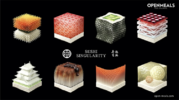Dec. 22, 2020
Some Canadians with an appetite for salmon may have already consumed the world’s first genetically modified food animal without even knowing it. As the aquaculture industry tinkers with fish DNA to more efficiently feed the world’s growing population, critics say we’re moving too far, too fast without adequate transparency
...
Unlike the European Union and the United States, Canada does not require GMO foods to be labelled...
...
Today, the Rollo Bay operation is also the sole supplier of genetically engineered Atlantic salmon eggs for the company’s land-based salmon farm in Albany, Indiana, which planned to send salmon to market late this year or early in 2021.
The eggs had their genesis in a laboratory at Newfoundland’s Memorial University, where scientist Garth Fletcher and his colleagues isolated the anti-freeze gene in ocean pout, which can survive year-round in near-freezing waters.
They replaced the coding region in the middle of the anti-freeze gene — unlike in other fish, the gene doesn’t turn off seasonally — with the growth hormone gene from chinook salmon (the scientists used chinook because it was readily available at the time).
Then the team injected the new coding sequence into Atlantic salmon eggs. “It took a while for us not to kill the eggs,” Fletcher, head of the ocean sciences department, says in an interview.
After tweaking their technique, Fletcher and his colleagues were excited to discover the genetic trait was passed on through breeding. And then came another exciting finding for the team; the rapidly-growing salmon reached maturity in just under two years, compared to three.
...
The first batch of genetically modified Atlantic salmon from the Panama facility arrived at Montreal’s Pierre Elliot Trudeau airport in 2017, according to import documents obtained by the Quebec food watchdog group Vigilance OGM. More than 4.5 tonnes of AquAdvantage salmon subsequently flowed, unlabelled and untraceable, into Canada’s food supply.
...


